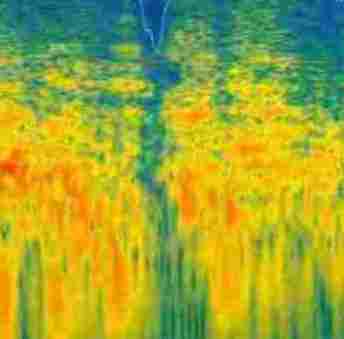This is the first of a few blog posts about just what is a trademark and some of the more unusual trademarks. As an Irish trademark agent, I take a European point of view, but the US may be the driving force for expanding unusual trademarks and what can or cannot be registered as a trademark, such as web and television motion marks.
When we talk about what a trademark can be, one of the most important rules is that it is capable of being represented graphically. What does this mean? Well, it does not mean that the trademark has to be something that you can see. The condition is only that it must be capable of being described in a way that can be understood by being read or seen. For trademark search that makes perfect sense. But it makes it difficult for unusual trademarks.
Importantly, it also means that trademarks can be more than just words or logos. The typical examples of unconventional trademarks are sounds, smells, colours and shapes. Here I look at sound trademarks.
There’s now really no controversy about sound marks. The Community trademark office has registered sound marks since the turn of this century. So, sounds can be registered as trademarks. Initially, Community sound trademarks were confined to musical notes, melodies or jingles and did not include noises. But in 2005, after a long-running battle with the Community trademark office, MGM finally managed to register its lion’s roar as a Community trademark.
Like traditional trademarks, sounds should still be tested against whether they indicate the source of origin of goods or services. While they can be short and fleeting, they must be so different or distinctive that within a tiny amount of time, your perception of the sound prompts you to think of particular goods or services. If the sound is not distinctive enough, it may be possible to show that it has acquired distinctiveness through use.
What are sound trademarks like? Short, distinctive sounds or jingles. That means that distinctiveness, not quality will be important. I’ve just listened to one that’s eh, interesting (rubbish)! And that’s being polite. It was worse than an annoying tune that gets stuck in your head. And it wasn’t a computer sound icon either.
Well known Community sound marks include the Nokia ringtone, the Yahoo yodel and MGM’s lion’s roar. You can have a listen to some Community sound trademarks by selecting sound from the ‘trademark type’ drop-down menu or try out some US sound marks here.
My favourite sound mark. Well that’s registered in the US and it’s ‘D’Oh’ from Homer Simpson registered by 20th Century Fox. Short, sweet and memorable. A big shout out to those who know my Simpsons back-story! For a musical one, well that’s McDonald’s ‘I’m Lovin It’.
The rules on how to apply for a sound mark differ from country to country. European law means that to apply for a Community sound trademark, the sound must be portrayed by images, lines or characters in a way that is clear, precise, self-contained, easily accessible, intelligible, durable and objective. That’s a long way of saying a musical score, and that includes any bum notes. Advances in technology have seen a rise of sound recordings being submitted and for Community trademarks these should be submitted with a sonogram picture representation of the sound. Most Community sound trademark applications now use a sound file and sonogram. What you cannot do is just give a written description of the sound, so no to cock-a-doodle-doo or do-ray-me then.
The US allows does allow written sound descriptions, unlike the Community trademark office. WIPO rules permit local trademark offices to call for the mark to be submitted on a musical score, by a sound file and pictorial representation or by written description. A trademark office can demand any or all of these in order to register the sound as a trademark. That means that practice varies from local office to local trademark office. ~ Michael Fitzsimons

